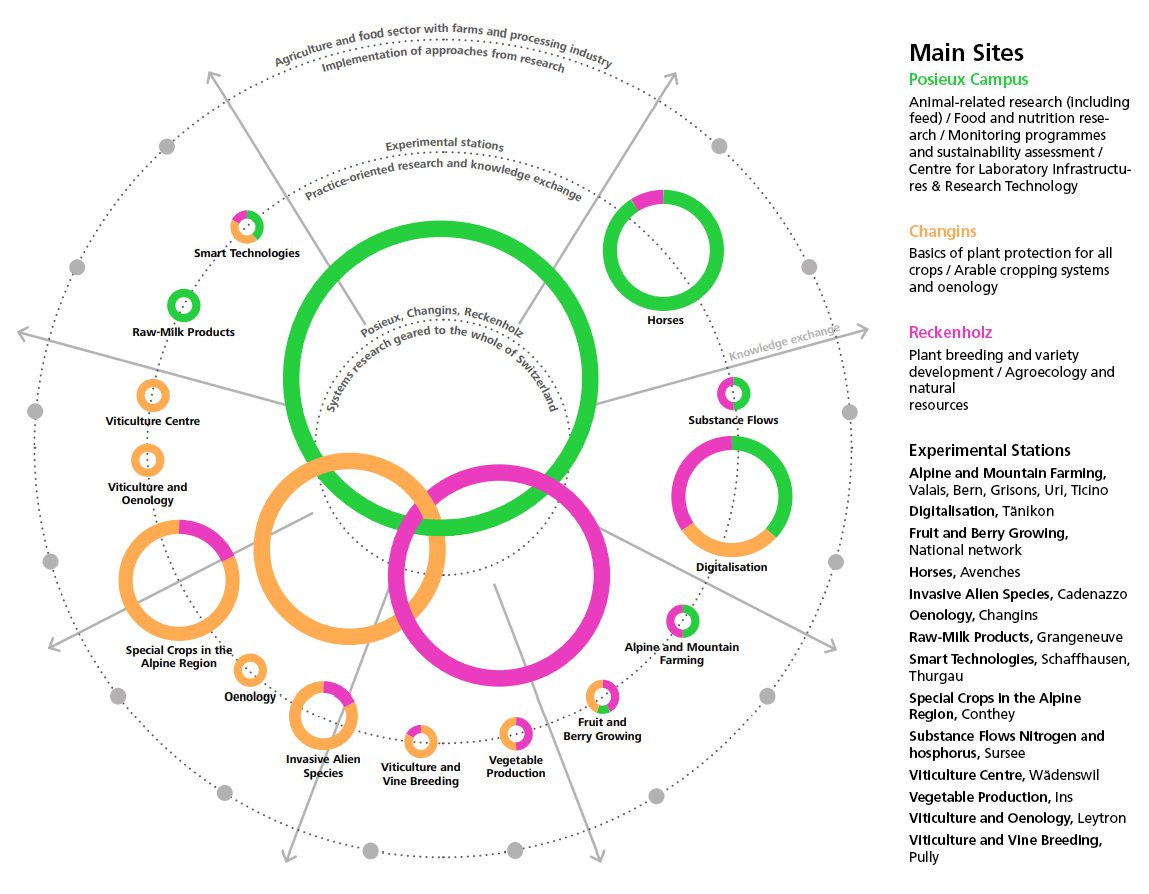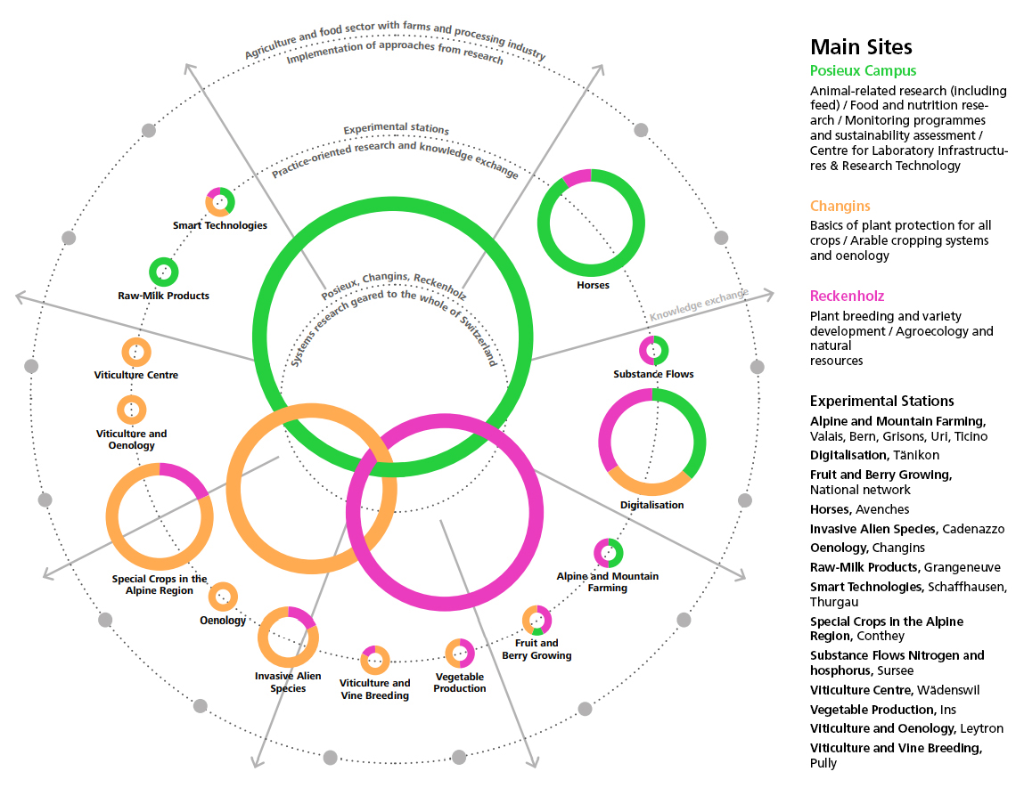The implementation of the new site strategy has begun: in future, Agroscope will consist of a central research campus in Posieux (canton of Fribourg), a research centre in Changins (canton of Vaud) and Reckenholz (canton of Zurich), and peripheral experimental stations. The efficiency gains arising from the new strategy will be reinvested in research. The planned expansion of the peripheral experimental stations will decisively strengthen practical relevance.
How can we meet challenges such as climate and structural change, novel pests, the loss of biodiversity, or society’s pressing demands to produce ever more food of higher quality within a limited space, and as far as possible without plant-protection products? One answer to this question is, with a strong agricultural research sector!
Future-Oriented Solutions from Research
With its broad-based research and development activities, Agroscope provides innovative and system-based solutions and findings for today’s and tomorrow’s problems. In this way, Agroscope makes a valuable contribution to the discussion of how the agriculture and food sector can produce in a more efficient and sustainable manner. But that’s not all – Agroscope also develops independent scientific criteria for decision-making and for the further development of agricultural policy. The new site strategy more effectively pools Agroscope’s internal skills and activities while expanding the Swisswide network. The creation and expansion of the peripheral experimental stations, which are run in partnership with the production branches, cantons and extension services, opens up new opportunities for knowledge exchange and practice-oriented research.
Building Bridges between Research and Practice
The aim of the peripheral experimental stations is to answer application-oriented questions in their respective regional and climatic context, based on the scientific principles developed on the Posieux campus and at the Changins and Reckenholz research centres. This will be done in close connection with the agricultural sector and with multipliers that will disseminate practice-oriented findings and successful solutions. The approach of the experimental stations, involving intensive cooperation with the cantons and the sector, is not a new one. Agroscope already operates special sites for answering practical questions, e.g. in Conthey for special crops, in Cadenazzo for invasive pests, and in Tänikon for digitalisation.
From the Experimental Farm to Commercial Farms
In the Tänikon experimental dairy housing for emission measurements, for example, measurements contributing to the reduction of ammonia and greenhouse gas emissions are tested under controlled experimental conditions. In a following step, the results are verified in the network of commercial farms under real-life conditions and tested in terms of their technical feasibility and practicability. If the results are positive, they enter broad practice via education and extension. Eva Reinhard, Head of Agroscope, sees a major opportunity in optimised, standardised knowledge exchange with practice, as well as in focusing and strengthening research and networking: “I am convinced that the shared commitment of all involved stakeholders will motivate, promote, and thus strengthen the agriculture and food sector. In particular, it will enable the faster transfer of research findings into practice. This is a decisive step in our efforts to make agricultural production more sustainable, more efficient and economically more successful.”







